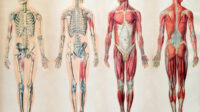The difficulty of the Internal Medicine board exam is the breadth of knowledge that physicians are required to know. In 2023, the pass rate for the exam was just 87%.
Below are sample Internal Medicine Board review practice questions. We suggest going through question banks several times.
Test your knowledge with these free questions from the BoardVitals Internal Medicine Question Bank.
Sample Internal Medicine Board Questions
Question 1. Nephrology/Urology QID 37921
You are seeing a 20-year-old man who complains of “puffy eyes” and “swollen ankles” for the past 2 months. He also states that his urine “looks kinda frothy and foamy”. On exam, all of his vital signs are within normal limits, and the exam is unremarkable (including funduscopic) except for mild bilateral edema 2+ in the bilateral feet to the ankle. He has never had any medical problems or surgeries. His laboratories reveal a normal serum creatinine, and urinalysis is significant for 4+ protein without blood or bacteria. He undergoes a kidney biopsy, which is normal on light microscopy but shows diffuse podocyte effacement on electron microscopy. Immunofluorescence is negative. Which is the best treatment for this patient?
A. Tacrolimus
B. Cyclophosphamide
C. Cyclosporine
D. Corticosteroids
E. Rituximab
Answer: D. Corticosteroids.
Explanation:
This patient most likely has Minimal Change Disease. Minimal Change Disease is most common in very young children but does commonly occur in older children and young adults as well. Minimal change disease is unique in that it lacks visible evidence of pathology on light microscopy alone. Characteristic findings on electron microscopy include podocyte effacement, vacuolation, and growth of microvilli on the visceral epithelial cells. Corticosteroids are the initial treatment of choice. A typical initial regimen is oral prednisone in a daily dosage of 1 mg/kg of body weight for 8-16 weeks (or until 1 wk after remission is achieved) followed by an alternate-day single-dose and then tapered if proteinuria disappears of falls to a very low level. Even after remission, relapses are common (only approximately 1/3 of patients have a single episode). If the patient is found to be resistant to steroids (as approximately 25% are), then tacrolimus, cyclosporine, or cyclophosphamide would be used. These are also used in patients with frequent relapses.
Reference: Palmer SC1, Nand K, Strippoli GF. Interventions for minimal change disease in adults with nephrotic syndrome. Cochrane Database Syst Rev. 2008 Jan 23;(1):CD001537.
Question 2. Endocrinology & Metabolism QID 37910
A 25-year-old woman presents to your office for evaluation of fatigue and polyuria for the last 9 months. She has also had anorexia and an unexplained weight loss of 12 pounds. She has had night sweats for a few months as well. Upon review of her labs from her annual exam around 9 months ago she had mild hypercalcemia and all other tests were normal including glucose. She has been playing outdoor tennis more regularly and was expecting to feel better with the increase in exercise. She does not have a history of nephrolithiasis or fractures. No family history of hypercalcemia. She does not take any medications.
Physical exam:
Weight 125 pounds, height 5’2”, blood pressure 102/74 mmHg, heart rate 94 bpm.
She has dry mucous membranes, and delayed deep tendon reflexes. Otherwise unremarkable.
You send her to the lab to evaluate her symptoms and history of mild hypercalcemia. Her lab results are remarkable for: Calcium = 13.1 mg/dL (8.9-10.1 mg/dL)
Phosphorus = 5.0 mg/dL (2.5-4.5 mg/dL)
Creatinine = 1.4 mg/dL (0.6-1.1 mg/dL)
Serum urea nitrogen = 22 mg/dL (6-21 mg/dL)
Intact PTH = 4 pg/mL (10-65 pg/mL)
25-Hydroxyvitamin D = 24 ng/mL (25-80 ng/mL)
1,25-Hydroxyvitamin D = 90 pg/mL (16-65 pg/mL)
Alkaline phosphatase = 99 U/L (37-98 U/L)
Which medication would best address the cause for this patient’s hypercalcemia?
A. Cinacalcet
B. Calcitonin
C. Prednisone
D. Zolendronic acid
Answer: C. Prednisone.
Explanation:
This patient has sarcoidosis which is associated with hypercalcemia. Hypercalcemia occurs in 11% of patients with sarcoidosis, hypercalciuria in 40% and renal calculi in 11%. Intrarenal calcium deposition can result in renal failure. Sarcoidal macrophages have 25-hydroxyvitamin D–1alpha- hydroxylase, which converts 25-hydroxyvitamin D to the more active vitamin D metabolite, 1,25 dihydroxyvitamin D. Renal formation of 1,25-dihydroxyvitmain D is tightly regulated, but extrarenal formation is not. This patient’s hypercalcemia was made worse with increased sun exposure and may have increased her risk for dehydration. The best initial treatment is prednisone since glucocorticoids decreases the conversion of 25-hydroxyvitamin D to 1,25-dihydroxyvitamin D via 1alpha-hydroxylation. None of the other options work on decreasing 1,25-dihydroxyvitamin D production so they would only be modestly effective (zoledronic acid, calcitriol) or not effective at all (cinacalcet).
Reference: Adams AS, et al.Arch Biochem Biophys. 2012; 523(1): 95–102. Iannuzzi MC, et al. N Engl J Med. 2007; 357(21):2153-2165
Looking for more prep? The BoardVitals Internal Medicine board review question bank has been newly updated for 2024-2025. It now provides more than 1,650 Internal Medicine review questions targeted to the latest ABIM Content Blueprint.
Along with expertly written sample questions, the BoardVitals Internal Medicine Question Bank contains innovative technology to help you make the most of studying. Create quizzes with adaptive testing technology, which presents questions tailored to your current competency level. The Internal Medicine Question Bank also includes AI-powered risk assessment performance data, providing insight into your most at-risk subjects to optimize study efficiency.




